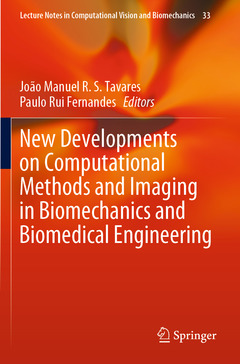Description
New Developments on Computational Methods and Imaging in Biomechanics and Biomedical Engineering, 1st ed. 2019
Lecture Notes in Computational Vision and Biomechanics Series, Vol. 33
Coordinators: Tavares João Manuel R. S., Fernandes Paulo Rui
Language: English
Subjects for New Developments on Computational Methods and Imaging in...:
Keywords
Numerical Studies of Blood Flow; Cancer Progression Models; Reaction-diffusion Tumor-growth Models; FE Analysis of Degenerative Diseases; 3D FE Models of Bones; Control of Physiological Systems; Models of Physiological Systems; Balloon Material Constitutive Modeling; Biomechanical Models; Anatomical Models; FEM Tongue Model; FEM-multibody Simulation; Analysis of Head Impacts; Semi-automatic Image Segmentation; Segmentation of Bone Scintigrams; CMBBE 2018
Publication date: 08-2020
Support: Print on demand
Publication date: 07-2019
Support: Print on demand
Description
/li>Contents
/li>Comment
/li>
This book gathers selected, extended and revised contributions to the 15th International Symposium on Computer Methods in Biomechanics and Biomedical Engineering (CMBBE2018), and the 3rd Conference on Imaging and Visualization, which took place on 26-29 March, 2018, in Lisbon, Portugal. The respective chapters highlight cutting-edge methods, e.g. new algorithms, image analysis techniques, and multibody modeling methods; and new findings obtained by applying them in biological and/or medical contexts. Original numerical studies, Monte Carlo simulations, FEM analyses and reaction-diffusion models are described in detail, together with intriguing new applications.
The book offers a timely source of information for biologists, engineers, applied mathematicians and clinical researchers working on multidisciplinary projects, and is also intended to foster closer collaboration between these groups.
Describes innovative computational methods for studying medical disorders
Reports on cutting-edge imaging and visualization techniques in biomedicine
Helps bridging the gap between research and clinical practice




